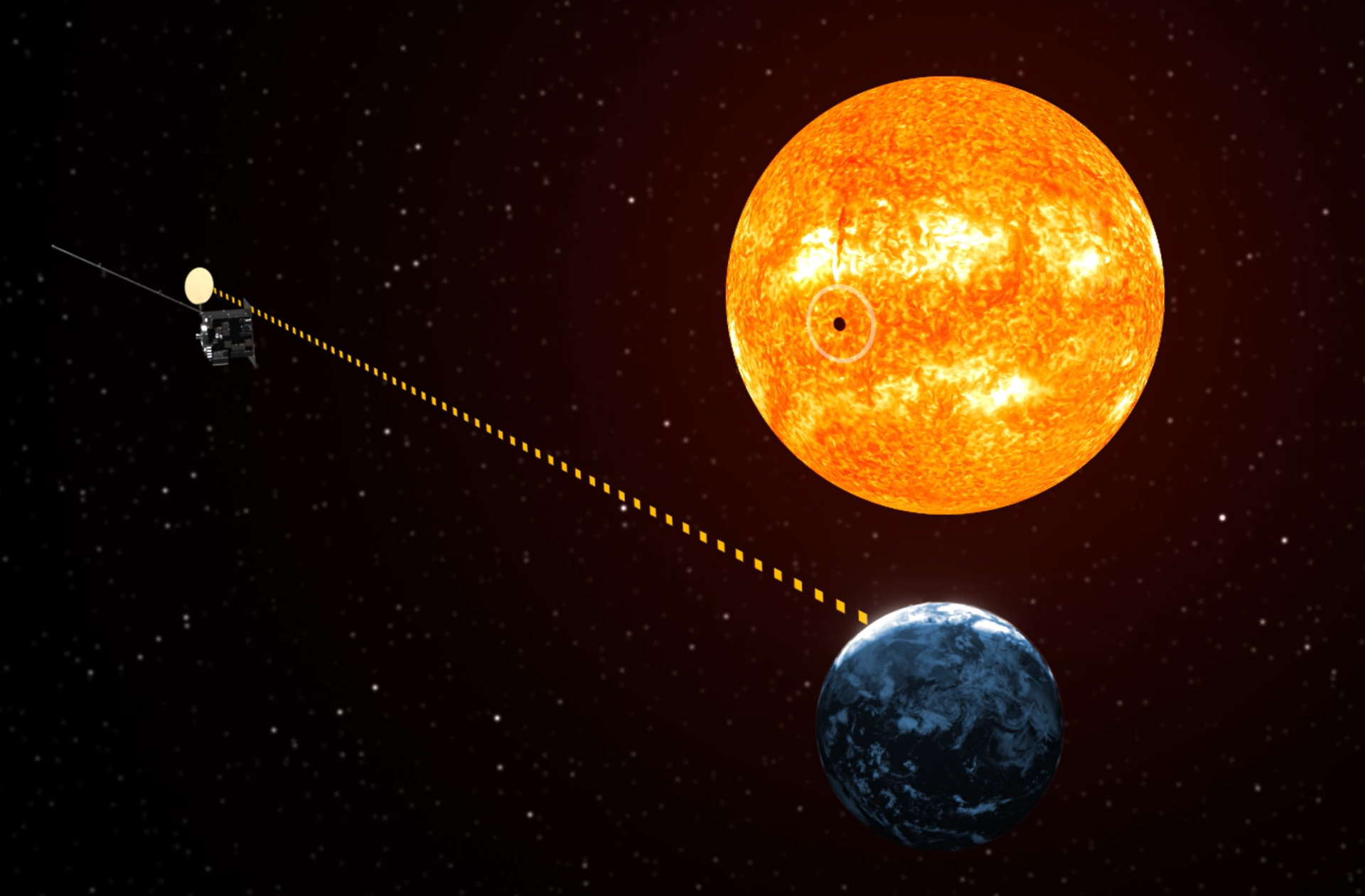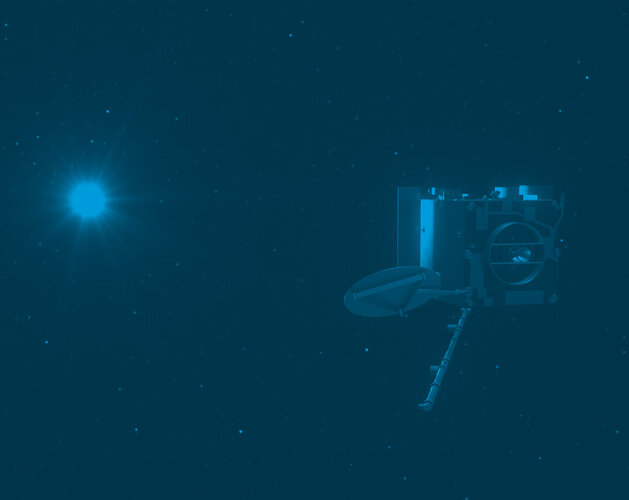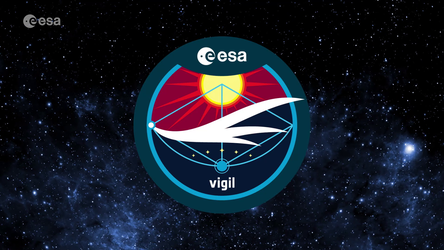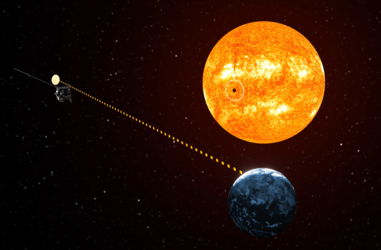Vigil mission overview
ESA’s space weather forecasting mission Vigil will monitor our active and unpredictable Sun to protect vital infrastructure on Earth and in space as well as space explorers from its violent outbursts. Vigil is planned for launch in 2031.
Mission objectives

Vigil will be Europe’s first 24/7 operational space weather satellite, delivering fast, accurate space weather warnings. Vigil will give an unprecedented notice of up to four to five days for certain space weather effects before they come into view from Earth.
Feeding Vigil’s data into ESA’s Space Weather Services continuously provides operators with valuable time to protect critical infrastructure such as power grids or mobile communication networks on Earth as well as satellites in Earth orbit.
Timely warnings are also key for astronauts, giving them time to take refuge in safe, specially protected areas onboard the ISS.
“Vigil will continuously feed data into operational space weather services and further solar science at the same time,” explains Giuseppe Mandorlo, Vigil Project Manager at ESA. “The spacecraft is also equipped with scientific instruments that lay the foundation for improved forecasting models based on Vigil’s operational data, creating a positive reinforcement loop.”
Forecasting space weather effects
“Without warning, space weather storms can cause potentially serious health problems for astronauts and the economic impact of space weather can be extensive, especially as we come to rely more and more on critical technologies underlying navigation, banking, aviation, power grids and telecommunications,” says Holger Krag, Head of the Space Safety Programme at ESA.
“Depending on the severity of an event, damages can reach more than several hundreds of billions of euros in case of an event of comparable magnitude as the biggest one we know, the 1859 Carrington Event.”
In Europe's economy today, numerous sectors can potentially be affected by space weather, suffering from the increased radiation damaging electronic systems. These range from space-based telecommunications, broadcasting, weather and navigation services, with knock-on effects ranging from logistics to banking. On Earth, power grids, commercial airlines and terrestrial communications can be directly affected as well, especially at northern latitudes.
The data collected by Vigil will feed into the ESA Space Weather Service Network, maintained by ESA’s Space Weather Office, part of the agency’s ambitious Space Safety Programme.
“The need and appetite for space weather services is growing as the potential impact of space weather events becomes more critical with our increased dependence on satellites in space.” says Alexi Glover, Space Weather Service Coordinator at ESA.
“Vigil’s data will add valuable accuracy and increased lead times to our services, transforming our ability to nowcast and forecast key space weather effects.”
Deep-space advantage at L5
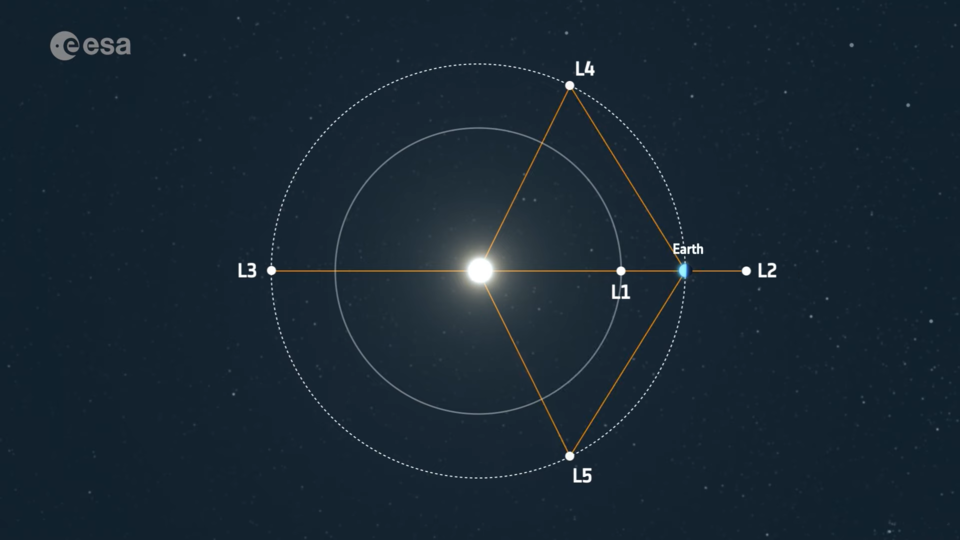
The Earth’s magnetic field deflects the majority of the charged particles and solar wind emitted by the Sun, while the atmosphere filters out the dangerous wavelengths of the Sun’s electromagnetic radiation − such as Extreme Ultraviolet (EUV), X-rays and gamma rays. This makes it essential to measure and observe in space with remote sensors to complement ground-based observations.
The key added value of Vigil’s data on potentially damaging solar activity is the result of its unique vantage point in deep space. Vigil will keep constant watch of the Sun from its orbit around the Lagrange point L5 in deep space.
Looking at the Sun and Earth from L5, Vigil – once known as ‘Lagrange’ – can observe much more clearly the speed, direction and chance of impact of coronal mass ejections (CMEs) as they hurtle through space from the Sun to Earth. From there it can also see the ‘side’ of the Sun and observe activity on the surface of the Sun days before it rotates into view and can be detected from the Sun-Earth line.
Solar wind, the stream of energized, charged particles flowing outward from the Sun, will be forecast up to five days in advance.
As it feeds into the ESA Space Weather Service Network, the data from Vigil at L5 will be combined with available data from the Sun-Earth line, including spacecraft like SOHO orbiting L1, resulting in more detailed and precise forecasts for end users across industries.
Vigil in short
Vigil is planned for launch in 2031 on an Ariane 6, transferring orbit from L1 to L2 before finally arriving at its final destination in orbit around Lagrange point 5. Vigil will be operational after 21 months, with an expected lifetime of five years at L5.
- 1160 kg dry mass
- 2500 kg wet mass (incl. 1300 kg of fuel)
- 1200 W power from its solar array, fixed onto the spacecraft
- Ground segment: 24/7 operations from missions control at ESOC, with communication through ESTRACK’s deep-space antennas with support from partner antennas
- X-band communication
The Vigil spacecraft
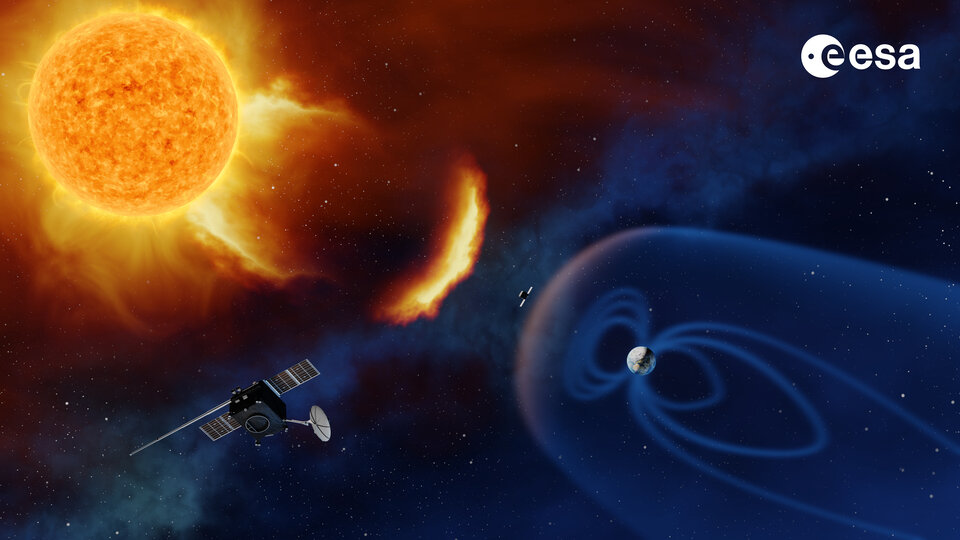
Airbus Defence & Space is building Vigil’s space segment as its prime contractor, including the design, development, integration, test, launch campaign and in-space commissioning of the satellite platform and payloads. The spacecraft will be assembled at Airbus Defence and Space Ltd. in Stevenage, UK.
The spacecraft has been designed to thrive in the harsh environment of deep space, as it is far outside the protective layers of our atmosphere and magnetic field. Vigil will have the ability to withstand severe space weather up to the size of the Carrington Event and maintain high availability during once-a-century extreme solar events – right when we’ll need it most.
Transferring data 24/7 from deep space without interruptions poses its challenges, requiring high availability and able to handle low latency. The spacecraft and its subsystems are uniquely designed to be able to process the instrument data on board to ensure an optimal and efficient long-distance data transfer to Earth.
Vigil's instruments
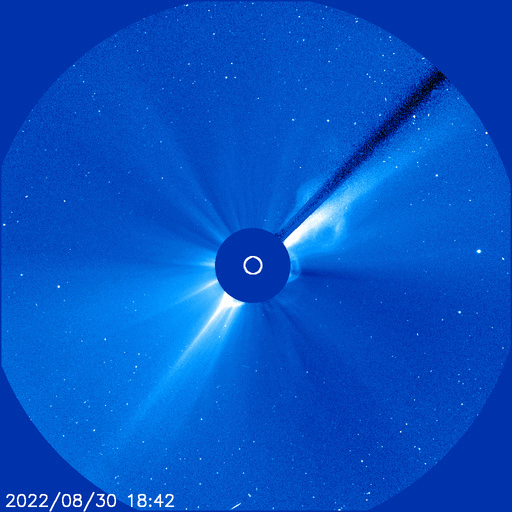
The payload suite consists of both imaging and in situ sensing instruments provided by a mixture of European institutes and industrial partners. In addition to the European instruments, Vigil will bring two instruments from the USA, from NASA and NOAA, strengthening international collaboration.
The Vigil payload will consist of the following instruments:
-
Photospheric Magnetographic Imager (Germany), Max Planck Institute for Solar System Research
This instrument will scan a selected spectral absorption line of the solar spectrum, and the data generated will allow the current, three-dimensional magnetic field configuration of the solar disc to be established. -
Heliospheric Imager (Italy, Belgium), Leonardo SpA/CSL, Belgium
A wide-angle visible-light imaging system for the detection of coronal mass ejection events in interplanetary space and, in particular, of CME events directed toward Earth. The data can be used to improve CME arrival time and effect predictions and monitor CME propagation as it can be viewed from the ‘side’ as it travels towards Earth. -
Compact Coronagraph (USA, NOAA), Naval Research Lab
The onset and characteristics of a CME can be derived from coronagraph imagery and these data are crucial input for predicting CME arrival times at Earth and any potential effect on infrastructure. -
Plasma Analyser (UK), Mullard Space Science Lab
The Plasma Analyser will determine solar wind properties, in particular density, velocity and temperature by measuring angular velocity components of the solar wind, mostly protons and Helium atoms, in certain energy ranges. -
Magnetometer (UK/Austria), Imperial College London/IWF Graz
Measurement of the interplanetary magnetic field will be essential for monitoring and modelling of its configuration and understanding how it is perturbed by CMEs. These observations assist space-weather forecasters in interpreting the evolution of the solar wind interacting with magnetic disturbances. - Extreme ultraviolet (EUV) Imager ‘JEDI’ (USA, NASA) Imaging of the complex solar corona (the Sun's atmosphere) will support monitoring of the magnetic complexity and activity in the corona and location of the flaring active regions.















 Germany
Germany
 Austria
Austria
 Belgium
Belgium
 Denmark
Denmark
 Spain
Spain
 Estonia
Estonia
 Finland
Finland
 France
France
 Greece
Greece
 Hungary
Hungary
 Ireland
Ireland
 Italy
Italy
 Luxembourg
Luxembourg
 Norway
Norway
 The Netherlands
The Netherlands
 Poland
Poland
 Portugal
Portugal
 Czechia
Czechia
 Romania
Romania
 United Kingdom
United Kingdom
 Slovenia
Slovenia
 Sweden
Sweden
 Switzerland
Switzerland

























